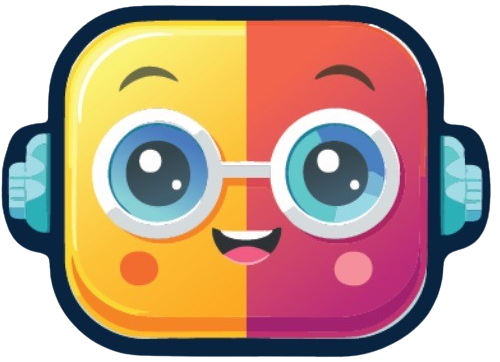Language is at the heart of how we communicate, analyze, and automate. In the world of AI, this responsibility falls to NLP — Natural Language Processing, the field that helps machines understand and generate human language.
But over the last few years, something shifted. A new class of models, called Large Language Models (LLMs), began outperforming traditional NLP systems — not just on single tasks, but across a wide spectrum of language challenges.
Let’s unpack the evolution of language AI — and understand why LLMs aren’t just powerful, but paradigm-shifting.
What Is NLP?
Natural Language Processing (NLP) is the branch of AI that enables computers to understand, interpret, and generate human language.
It sits at the intersection of linguistics, machine learning, and data science, aiming to bridge the gap between human communication and machine comprehension.
Traditional NLP systems are often built to solve specific tasks, such as:
- Classifying sentences (e.g., spam vs not spam)
- Tagging parts of speech or named entities
- Generating text summaries or translations
- Extracting answers from documents
These systems usually require task-specific training, meaning a new model (or fine-tuned version) is built for each task.
NLP works well when trained with the right data and structure — but scaling it across multiple tasks has historically been complex and resource-heavy.
What Are LLMs?
Large Language Models (LLMs) are powerful AI systems trained on vast amounts of data — often with hundreds of billions of parameters — to understand and generate human-like language.
LLMs were initially built to handle a wide range of text-based tasks: answering questions, summarizing content, translating text, and generating human-like responses. But modern LLMs have evolved far beyond that.
Today’s most advanced models are multimodal, meaning they can:
- Understand and generate text
- Analyze and describe images
- Interpret or create videos
- Process audio and respond with speech
Models like GPT-4o, Gemini, and Claude 3 don’t just handle one type of input — they can combine text, visuals, and sound in a single, seamless experience.
How Do LLMs Learn?
LLMs are trained using a technique called self-supervised learning — where the model learns by predicting parts of the input data itself.
For example:
Given the sentence “The capital of France is ___”, the model learns by trying to predict “Paris”.
No manual labeling is required. Instead, the model reads trillions of words and learns to recognize patterns, relationships, and structure — all on its own. This enables it to generalize to new prompts and tasks during inference time.
LLMs also support in-context learning:
Provide a few examples or instructions inside the prompt, and the model can adapt without any additional training.
Combined, these features turn LLMs into versatile language engines — capable of powering chatbots, creative tools, research assistants, and more.
NLP vs LLMs: Key Differences
While LLMs are a part of the NLP ecosystem, they represent a shift in how language problems are approached — from task-specific pipelines to general-purpose models.
Here’s how they compare:

NLP gave us the foundation — grammar parsing, entity recognition, sentiment analysis. LLMs took that further by scaling up model size, data, and flexibility.
Today, most modern applications blend both: NLP tasks, powered by LLM architecture.
Impact of LLMs on NLP
The rise of Large Language Models hasn’t replaced NLP — it’s reshaped it.
Before LLMs, NLP workflows involved building and fine-tuning separate models for each task: one for classification, another for summarization, another for translation. This required labeled data, task-specific pipelines, and ongoing maintenance.
LLMs changed that. With a single, pre-trained model, you can now handle multiple NLP tasks out of the box — often with no fine-tuning required. Need a summary, a translation, or an answer? Just change the prompt.
Here’s what shifted:
- From fine-tuning to prompting: Instead of retraining models, developers now design better prompts.
- From narrow to general: One model can handle dozens of tasks — text, image, audio, even reasoning.
- From manual to scalable: Tools like GPT and Claude let teams build applications faster, with fewer resources.
LLMs didn’t replace NLP. They absorbed it — and expanded what’s possible.
Limitations of LLMs
Despite their versatility, LLMs aren’t perfect. In fact, their power comes with trade-offs — especially when it comes to truth, reasoning, and control.
Here are the key limitations:
- Hallucinations: LLMs may confidently generate false or made-up information — especially when prompts are vague or the source data is lacking.
- Bias: Trained on internet-scale data, LLMs can reflect or amplify social, political, or cultural biases present in the data.
- Lack of True Understanding: LLMs predict patterns, not meaning. They don’t truly “understand” context — they simulate it.
- Reasoning Limitations: Complex logic, multi-step reasoning, or mathematical problems often trip them up — especially without tools or structure.
- Context Window Limits: There’s a cap on how much information a model can “see” at once. Longer inputs may get cut off or ignored.
- High Compute Costs: Running or fine-tuning LLMs requires significant compute power — making them expensive for large-scale deployment.
Conclusion
Natural Language Processing laid the groundwork. Large Language Models scaled it to new heights.
NLP gave us rule-based systems, task-specific models, and pipelines tailored for individual use cases. LLMs disrupted that approach with general-purpose models that can handle dozens of tasks — sometimes with just a few examples, or even none.
But with that power comes new challenges: hallucinations, reasoning limits, and high resource demands.
The key takeaway?
LLMs are not a replacement for NLP — they’re its next chapter.
They build on the same goals: helping machines understand and use human language — just with a broader canvas.
🔔 Want more clarity on where LLMs are headed?
Follow along — we’ll break down advanced topics like Tranformers, Fine Tunning, RAG, prompt strategies, and how to make AI outputs more grounded and useful in the real world.

